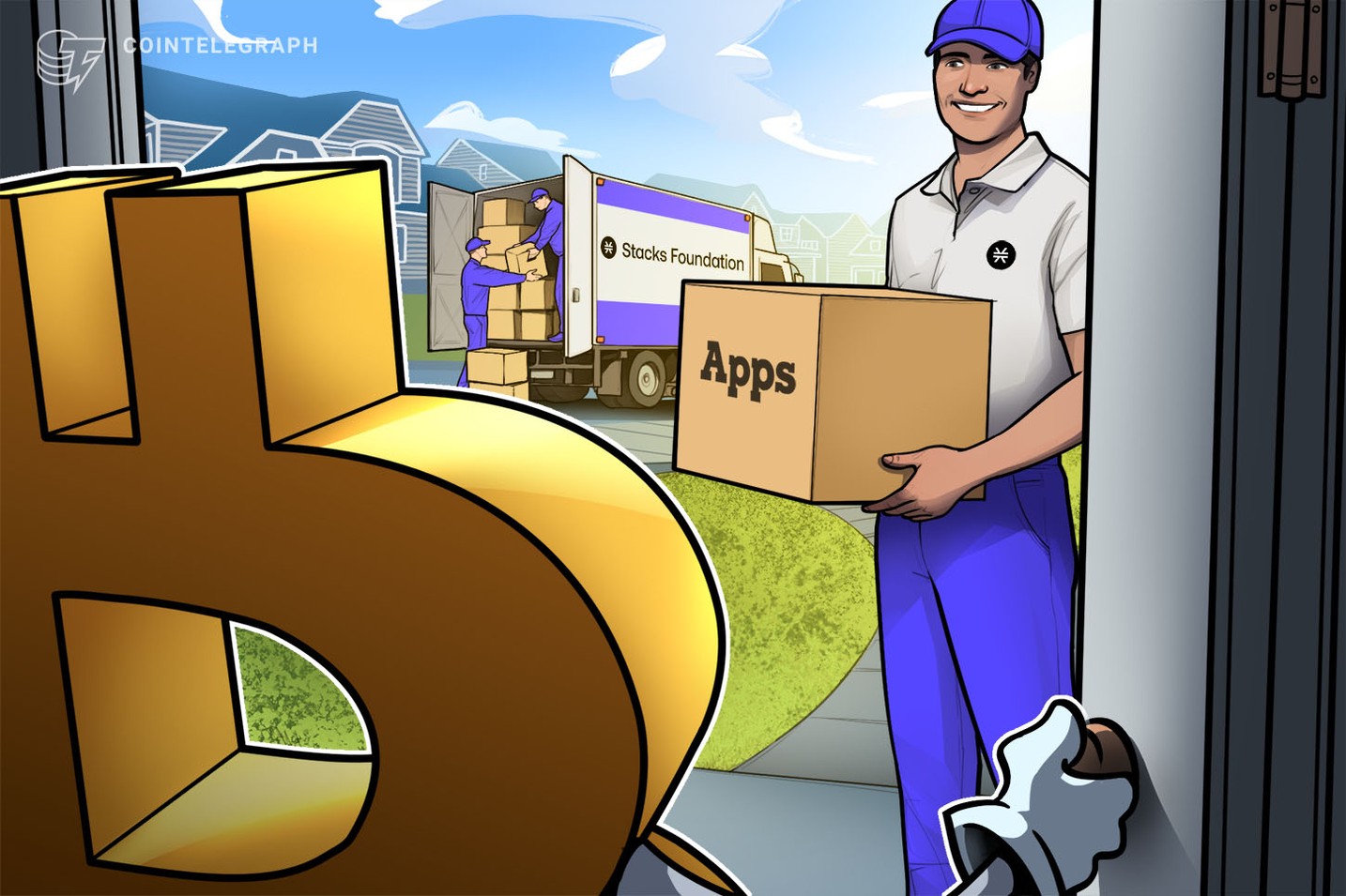A blockchain project says it makes Bitcoin programmable in a way that it hasn’t been before — enabling apps and smart contracts to be brought to the network.
Stacks (formerly known as Blockstack) aims to position BTC as the foundation for a better internet that’s owned by users.
Those behind this ecosystem argue that the internet is broken, with tech giants dominating the landscape.
Stacks is a Layer 1 blockchain that uses Bitcoin’s infrastructure as a secure base layer. Smart contracts and apps can be enabled with little modification, with “minimal transaction load” on the network.
Underpinning how scalable Stacks can be, developers claim that thousands of transactions result in a single hash — and microblocks result in quick confirmations. Crucially, this means that Stacks can scale independently of Bitcoin.
How the technology works
Whereas the Bitcoin blockchain relies on the energy-intensive proof-of-work consensus mechanism, Stacks uses a novel alternative called proof-of-transfer, which reuses energy already spent on a proof-of-work chain — in this case Bitcoin. Known as PoX for short, those building Stacks claim that this is the first consensus algorithm between two blockchains — and it has the objective of “eliminating the choice between flexibility and security.”
To eliminate the risk that a smart contract might perform in an unexpected way, which has become a common problem, a new programming language is being introduced with Stacks 2.0 called Clarity. This open-source project was jointly developed with Algorand, and is designed to give developers a safe way of building complex agreements.
“Clarity makes it much harder to have smart contract bugs and allows developers to write logic around Bitcoin state directly. We believe bringing smart contracts directly to Bitcoin can make BTC more valuable as it can be put to productive use instead of being a passively held asset,” the Stacks whitepaper says.
Stacks 2.0 has been designed in recognition of the fact that “Bitcoin is the most valuable, most secure blockchain in the world” — the world’s biggest cryptocurrency that has gained increasing levels of acceptance among institutional investors and media organizations.
In time, the project believes that Bitcoin could become a new source of liquidity — as well as the default reserve asset for DeFi, eating into a market that has been dominated by Ethereum until now.
“People are trying to bring BTC to Ethereum whereas we’re going the other direction, bringing Ethereum-like functionality to Bitcoin in a more secure, scalable way. With Stacks, we can take Bitcoin from passive to active capital,” the team added.
As well as unlocking new cases for Bitcoin, Stacks pointed out that its ecosystem is also well developed — with more than 400 DApps built on its network to date. The latest figures suggest that at least 300,000 people hold STX tokens globally.
Stacking versus staking
Whereas “staking” has become a major buzzword in the crypto community in recent months — in part due to how the Ethereum blockchain is making the transition to proof-of-stake — Stacks says that it has come up with a Bitcoin-focused alternative: Stacking.
Stacking involves locking STX to the network and sending periodic transactions, helping to keep things secure. Stacks says that regular Bitcoin rewards are offered in exchange — adding that this approach helps crypto enthusiasts avoid the need for costly mining setups and DeFi products that have been built on insecure smart contracts.
One crucial difference with stacking lies in how user funds cannot be slashed based on network activity. A user’s funds never leave their wallet, and no special hardware is required to get involved.
As 2021 gets underway, Stacks is aiming to build a better financial system on top of Bitcoin that makes capital worth hundreds of billions of dollars programmable.
Disclaimer. Cointelegraph does not endorse any content or product on this page. While we aim at providing you all important information that we could obtain, readers should do their own research before taking any actions related to the company and carry full responsibility for their decisions, nor this article can be considered as an investment advice.
